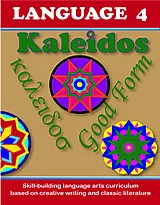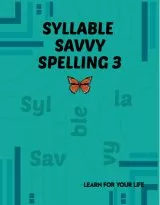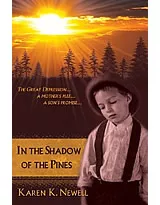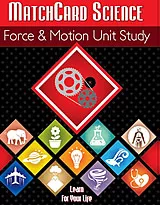Diagram of the Ocean Floor
Features of the Ocean Floor
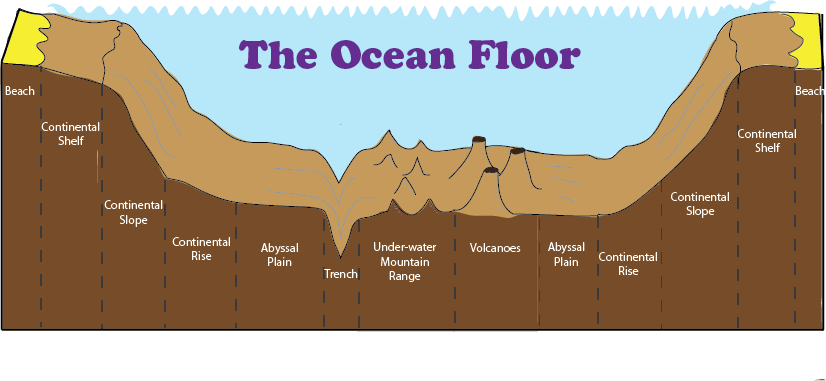
Take a deep-dive to the bottom of the ocean. Our Oceanography MatchCard includes a diagram of the ocean floor and a description of the geologic features of the very depths of our planet. Students identify and describe the underwater areas. Hands-on activities are suggested.
Free Download Below
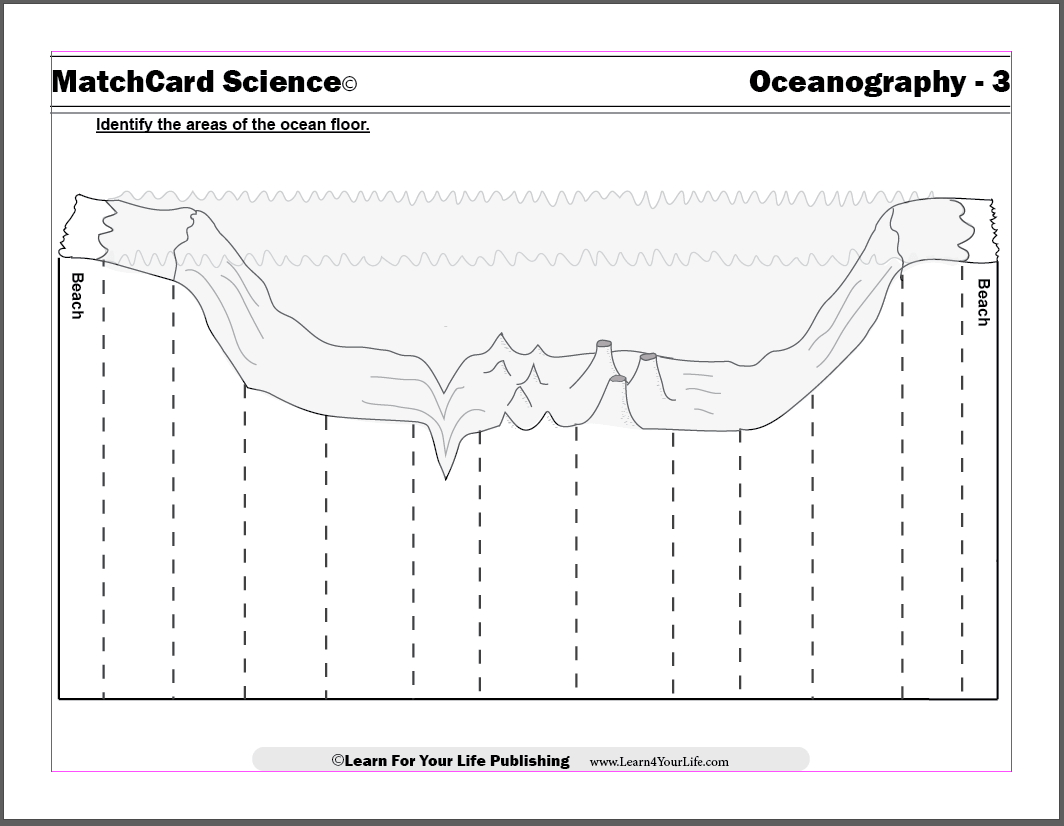
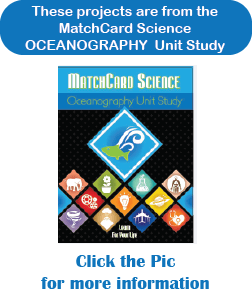
Ocean Floor MatchCard
Objective: Identify the parts of the ocean floor.MatchCard: Download below.
MatchCard Information Pieces define and describe the parts of the ocean floor including:
- Continental Shelf
- Continental Slope
- Continental Rise
- Trenches
- Underwater Mountain Ranges
- Volcanoes on the Ocean Floor
- Abyssal Plain
Print the Diagram of the Ocean Floor
This is MatchCard #3 of the Oceanography Unit Study. More information on the MatchCard Science curriculum is at the bottom of this page.Ocean Floor Topography
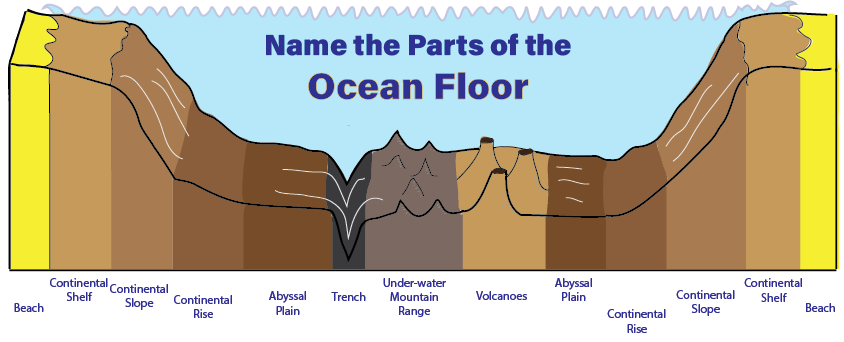
First we start on the ocean beach looking out at the waves. Ask the kids what sea life they might see on the beach. Star fish, clams, and oysters might be some of the answers.
The Continental Shelf
Start wading into the ocean. What do you feel between your toes? Sand, from the beach.You will be walking along this sandy, continental shelf for several miles. As you walk out further the water covers your head. While you are no longer "on land", the ocean bottom that you are walking on is still part of the continent you were on. It slopes gradually down.
By international agreement, the water over you is called territorial waters. That means that any ship that comes into those waters is sailing into area owned and controlled by the country on shore. They had better be friendly ships!
We have a long walk. The continental shelf off of most continents is approximately 200 miles from shore. This is an interesting walk. There are lots of plants and animals to see. It is like walking in a giant acquarium.
What ocean creatures that we learned about in Lesson 2 would you like to meet? (Or not meet?)
The Continental Slope
Suddenly, the ocean bottom starts dropping significantly. We have now reached the continental slope, which has a downward slope much greater than the gradual decline of the continental shelf we were just walking on.This is like walking down a steep hill. It is getting darker as we get further from the sun. We also start to notice underwater canyons, where submarines can hide. This is starting to look less and less like the Earth we are familiar with.
Continental Rise
At the bottom of the continental slope we reach the continental rise. We are still walking downhill. The slope is not as sharp as it was with the continental slope, or as gradual as it was when we first started on the continental shelf. We can feel pressure on us as the amount of water over our heads increases.Why is this called the continental rise, when we are going down? There is a simple answer. If someone started walking from the very bottom of the ocean floor and was walking toward land, the ocean bottom would be rising as they got closer to the continent.
The ground under our feet is made from sentiment washed off from the continent. The further away we get, the lower we are.
We are heading towards the abyssal plain or the bottom of the ocean.
Ocean Trenches
There are a number of exciting features of the ocean floor that we may encounter. We might meet them in any particular order depending on which ocean we are exploring.Suddenly, we are heading straight down again into a valley. The valleys are called ocean trenches. We take out our diagram of the ocean floor and notice that these trenches are the lowest part of the ocean floor.
Ocean trenches are a geological structure that occures when the border of one tectonic plate is below another plate margin. The resulting valley extends into the mantle of the earth. The deepest trench on the Earth extends 36,000 below the surface. No light is at the bottom.
We have just gone lower than any human has ever gone. The deep ocean trenches an inhospitable to life.
Underwater Mountain Range
Now a new feature of the ocean floor appears: an underwater mountain range. The ground is folded and rises with each individual mountain. Entire mountain ranges can spread for hundreds of miles.Underwater Volcano
On our diagram of the ocean floor we see a new challenge ahead. Underwater volcanos exist on the ocean floor just as they do on the Earth's surface. They also can erupt pouring hot lava into the ocean. Islands may form from underwater volcanoes.But we want to get past the volcano before any eruptions occur.
Abyssal Plain
Finally we reach the flattest part of the ocean floor: the abyssal plain. We are about 5000 meters below sea level.At first we notice no plant or animals this far under the water, where virtually no light from the sun can get through. However, the ocean floor is teaming with small microbes which can survive in this cold, deep, and dark place.
As we continue across the abyssal plain, we reach the other side of the ocean. We again go upwards as we climb the continental rise. A steep upward slope greets us as get to the continental slope. As we continue up the gradual sloping continental shelf we know we are getting close to another continent.
Use the Diagram of the Ocean Floor as a Worksheet
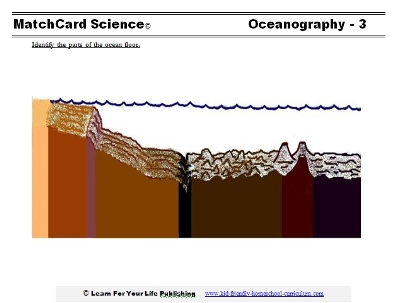
Each section can be colored with markers, crayons, or colored pencils as it is studied.
Model of the Ocean Floor
The diagram of the ocean floor can be used to make a model of the ocean topography.Clay or paper mache can be used to re-create the continental shelf, continental slope, continental rise, and abyssal plain. Don't forget to add the ocean trenches, underwater mountains, and underwater volcano. The last three features can be in any order.
Paper Mache Directions
- One cup flour
- Two cups water
- Newspaper (or scratch paper)
- Cardboard (or cookie sheet) for base
- Large bowl for mixing
- Brown, Grey, Black Acrylic Paints (optional)
Learning More About the Ocean Floor
In addition to the diagram of the ocean floor, there are other great resources:- National Geographic and other documentaries on DVD
- Youtube Videos
- Websites
- Activity books
For those doing an integrated unit study, the ocean floor gives great opportunities for other areas of learning.
- More detailed story about a journey across the ocean floor
- Take one part of the ocean floor and learn even more about it. This can be shared between several students.
- Make a world map of underwater mountain ranges or active underwater volcanoes.
MatchCard Science
How To Use MatchCards
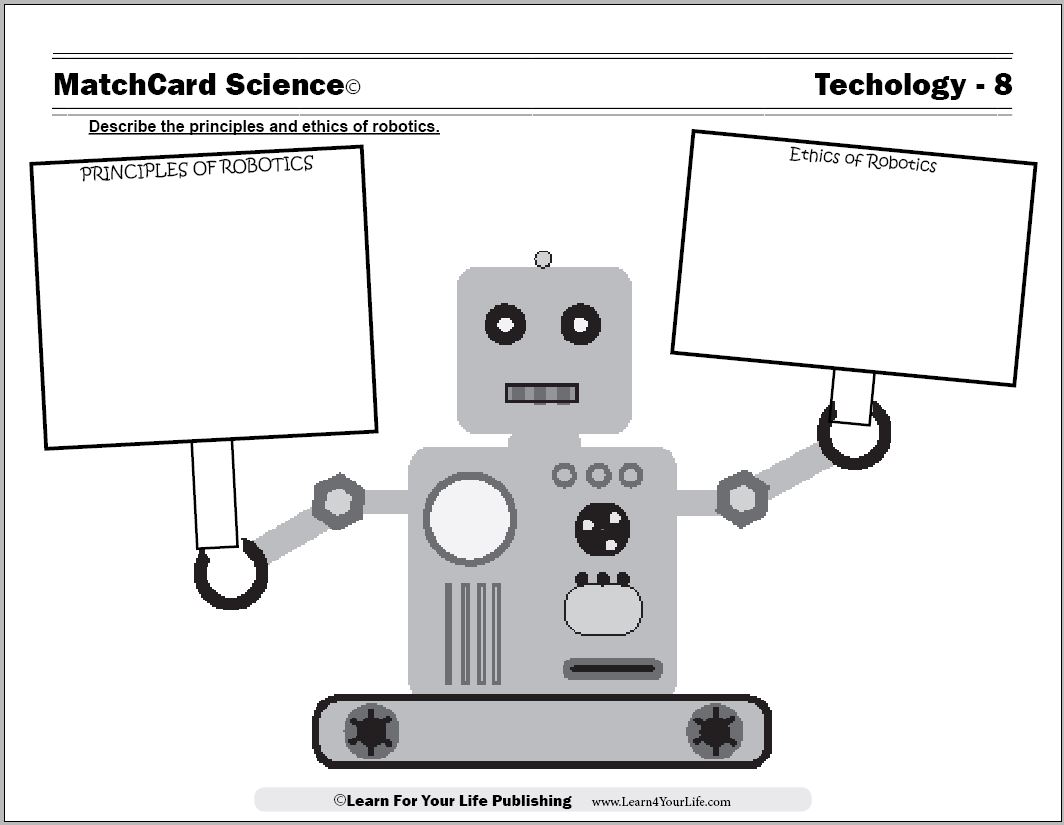
Download the FREE MatchCard Science Instructor's Guide and see how MatchCards can make building their science knowledge base fun.
Ocean Unit Study
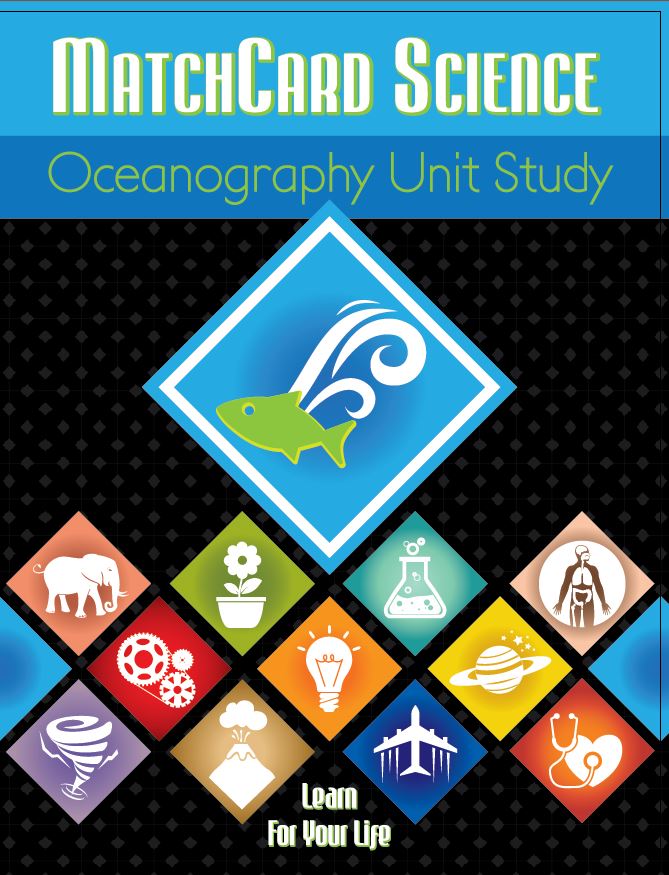
12 Science Unit Studies

Chemistry is only one of twelve complete unit studies for kids in 3rd to 8th grade.
Comprehensive objectives, hands-on projects, suggested science fair experiments, and the fun game-like MatchCards keep them interested in learning science. See all twelve MatchCard Science Unit Studies.
About Our Site
Hands-On Learning







